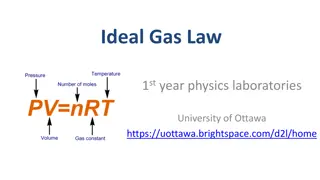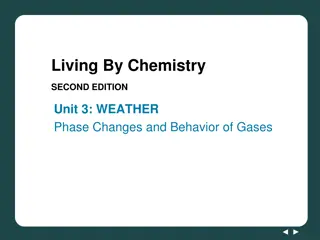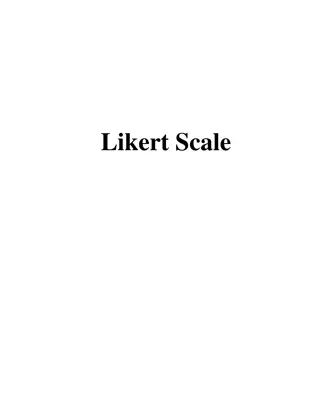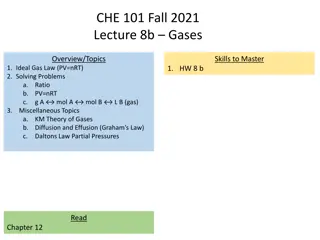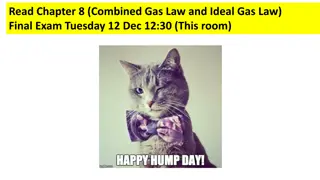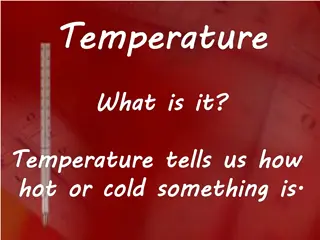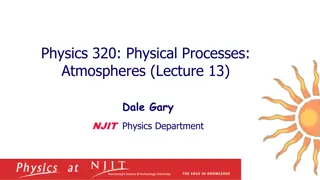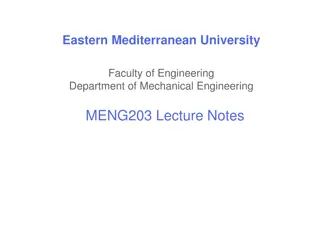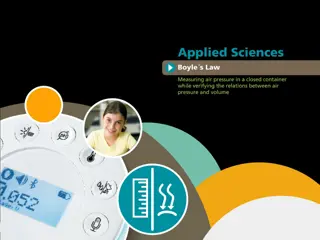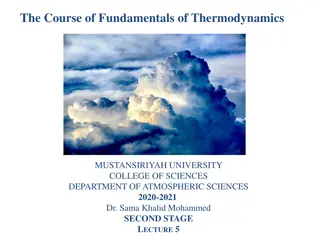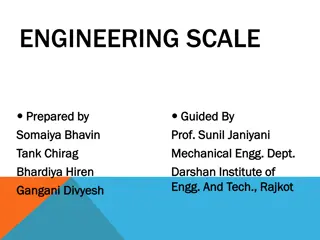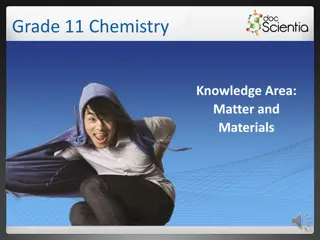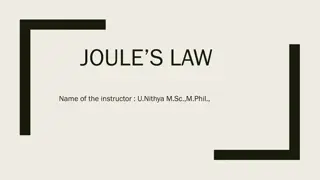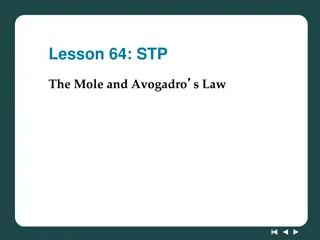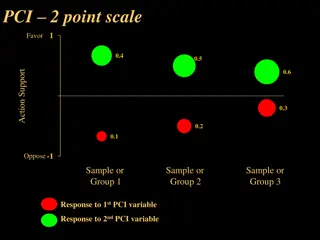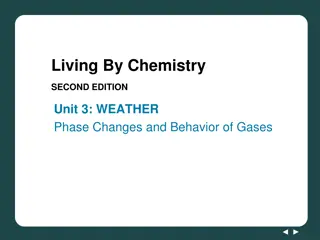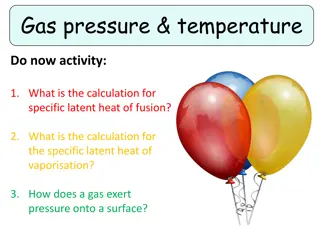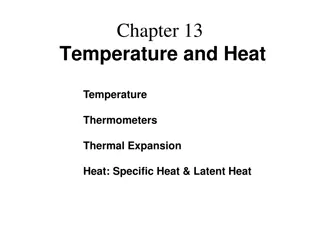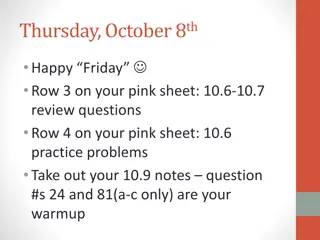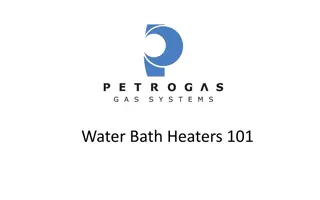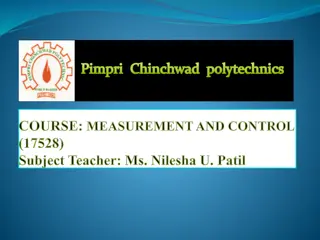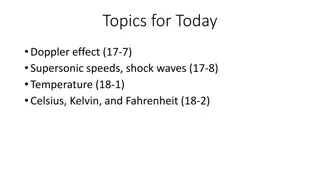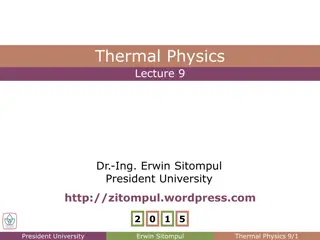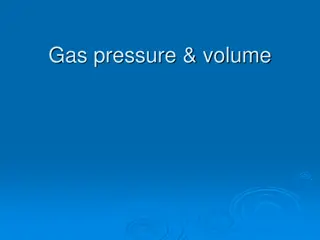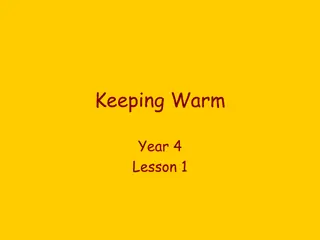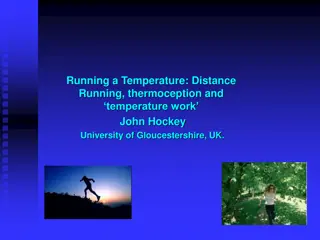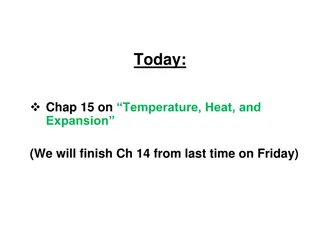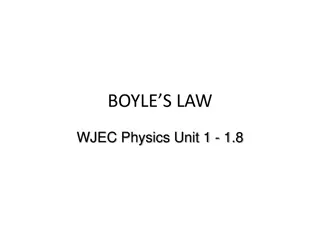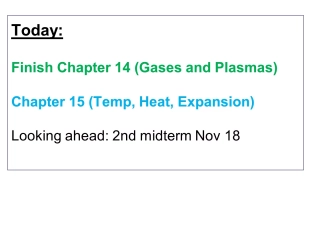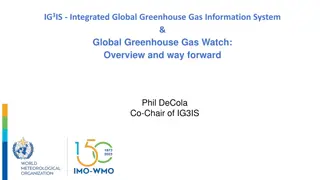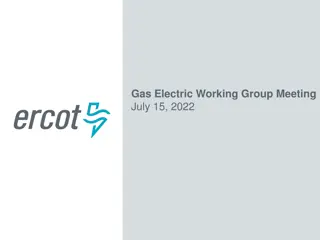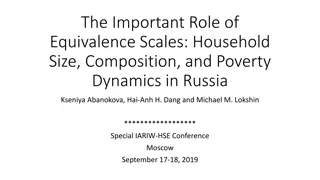Understanding Temperature Scales and the Ideal Gas Law
This comprehensive guide delves into temperature scales, thermal expansion, and the ideal gas law. Explore the origins of Fahrenheit, Celsius, and Kelvin scales, and learn how to convert between them. Discover the concept of heat, thermal equilibrium, and the Zeroth Law of Thermodynamics. Gain insights into the relationship between heat and temperature and how they influence energy flow. Dive into practical examples and problems to deepen your understanding of thermodynamics.
Download Presentation

Please find below an Image/Link to download the presentation.
The content on the website is provided AS IS for your information and personal use only. It may not be sold, licensed, or shared on other websites without obtaining consent from the author. Download presentation by click this link. If you encounter any issues during the download, it is possible that the publisher has removed the file from their server.
E N D
Presentation Transcript
Part 3 Thermodynamics Chapter 19: Temperature and the Ideal Gas Law Reading assignment: Homework (not due): Problems: Chapter 19: 1, 14, 17, 28, 30 Chapter 20: 3, 5, 13, 20, 28, 32 Chapter 19 Temperature scales: Fahrenheit, Celsius (centigrade), Kelvin Thermal expansion The ideal gas law
Temperature Scales: Reliable and quantifiable way of measuring how hot an object is.
Fahrenheit (1686-1736) established three fixed points on his thermometer. 0 degrees: temperature of an ice, water, and salt mixture. 32 degrees: water-ice combination stabilized at "the thirty-second degree." 98 degrees: when the thermometer is held in the mouth or under the armpit of a living man in good health." Celsius (1701-1744) established two fixed points on his thermometer. 0 C: representing the freezing point of water. 100 C: the boiling point of water. Kelvin (1834-1907) used the same gradation as Celsius but set his zero point at absolute zero (All molecular motion ceases at absolute zero).
How to convert from one temperature scale to another: = 273 15 . T T 9 C = + 32 T T F F C 5 9 = 459 67 . T T F F 5 Where TC, TF, T is the temperature in Celsius (centigrade), Fahrenheit and Kelvin, respectively Kelvin is the proper SI unit
Black board example 19.1 When the thermometer is held in the mouth or under the armpit of a living man in good health it indicates 98 F (Can fluctuate between 97.5F and 98.9F). a) What is the temperature in Celsius (centigrade)? b) What is the temperature in Kelvin?
Heat is the energy that flows between objects because of their difference in temperatures Heat is thermal energy on the move Technically: object s don t contain heat Thermal equilibrium Two objects are in thermal equilibrium when they have the same temperature. They cease to exchange heat. Zeroth law of thermodynamics: If object A and B are separately in thermal equilibrium with a third object C (thermometer), then objects A and B are in thermal equilibrium.
Heat and Temperature Touching objects exchange thermal energy Microscopically, energy flows both ways On average, energy flows one way Temperature predicts energy flow direction Energy flows from hotter to colder No flow thermal equilibrium same temp Temperature turns out to be average thermal kinetic energy per particle More on heat in Chapter 20
Thermal expansion of solids and liquids When objects are heated up they typically expand. This is due to the increased motion of molecules at elevated temperatures. Change in Length: = i L L T coefficient of linear expansion Li initial length L change in length T change in temperature (in centigrade or Kelvin)
Black board example 19.2 Problem 19. 8 The New River Gorge Bridge in West Virginia is a steel arch bridge 518 m in length. (alpha=11 x 10-6/C) How much does its length change between temperature extremes of -20.0 C and +35.0 C
Thermal expansion of solids and liquids When objects are heated up they typically expand. This is due to the increased motion of molecules at elevated temperatures. Change in Volume: = i V V T coefficient of volume expansion Vi initial volume V change in volume, T change in temperature (in centigrade or Kelvin)
The Unusual behavior of water. Or: What is the temperature at the bottom of a deep lake? Or: Why does a lake freeze from the top and not the bottom?
The ideal gas law Idealized assumptions (work well for many gases at medium temperatures and low pressures): - Gas molecules don t interact upon collision - Molecular volume of gas molecules is negligible compared with volume of container V P = n R T P Pressure of gas V Volume of gas n number of moles of gas R Universal gas constant, R = 8.315 J/mol K T absolute Temperature (in Kelvin)!!
Black board example 19.3 Problem 19.28 Nine grams of water are placed in a 2.00 L pressure cooker and heated to 500 C. What is the pressure inside the container if no gas escapes?


